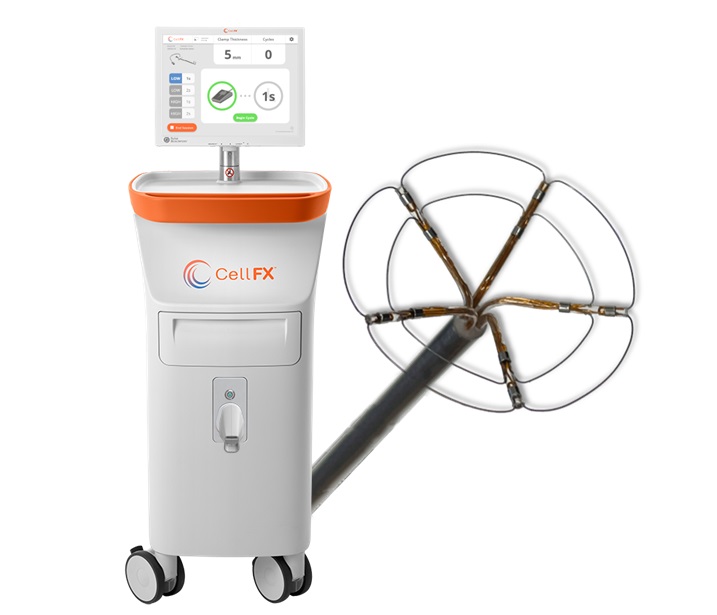Nanosecond Pulsed Field Ablation Technology Effective in Treating Atrial Fibrillation in Cardiac Surgery
|
By HospiMedica International staff writers Posted on 12 Aug 2024 |

A new method for surgical cardiac ablation designed to create continuous linear transmural ablations during cardiac procedures offers significant safety and performance advantages over existing thermal ablation techniques. This approach has the potential to shorten procedure times and reduce the risk of collateral damage to surrounding tissues.
Pulse Biosciences’ (Hayward, CA, USA) Cardiac Surgery System with Surgical Clamp is designed to produce durable and continuous transmural ablation lesions during cardiac surgeries to treat atrial fibrillation. The bipolar clamp employs the company's unique Nanosecond Pulsed Field Ablation (nsPFA) technology. Pre-clinical studies have shown that a single application with the Surgical Clamp, lasting less than two seconds, can create a consistent, durable transmural ablation. This is significantly faster, taking about one-twentieth of the time required by current thermal ablation methods. Additionally, the non-thermal nature of nano-PFA eliminates the risk of thermal spread, which can cause unintended damage to nearby tissues, making it a safer alternative to thermal radiofrequency ablation.
The nano-PFA Cardiac Surgical System was granted FDA Breakthrough Device Designation in early July 2024. Pulse Biosciences has now announced the successful treatment of the first two patients in a first-in-human feasibility study using this novel Cardiac Surgery System for cardiac tissue ablation to treat atrial fibrillation. This multicenter study will involve up to 30 patients and will include endocardial catheter-based remapping to confirm chronic isolation approximately three months post-treatment. The initial procedure results demonstrated effective pulmonary vein and ‘box’ isolation using Pulse’s Cardiac Surgery System. Surgeons were able to quickly and efficiently create linear ablations, accomplishing the task in a fraction of the time required by current thermal techniques like radiofrequency or cryoablation.
“These initial treatment results confirm our preclinical work with the cardiac surgical system. The patients tolerated our procedure well. We are pleased to see how the intuitive design of the device facilitates an efficient procedure where surgeons can create controlled lesions with adequate depth very rapidly,” said Dr. Gan Dunnington, Chief Medical Officer, Cardiac Surgery of Pulse Biosciences. “We are excited to continue enrollment in this feasibility clinical study, which is intended to demonstrate the device’s safety, effectiveness and durability profile.”
Related Links:
Pulse Biosciences
Latest Critical Care News
- Mass Manufactured Nanoparticles to Deliver Cancer Drugs Directly to Tumors
- World’s Smallest Pacemaker Fits Inside Syringe Tip

- AI-Powered, Internet-Connected Medical Devices to Revolutionize Healthcare, Finds Study
- Starfish-Inspired Wearable Tech Enables Smarter Heart Monitoring
- AI Eye Scans Could Help Identify Heart Disease and Stroke Risk
- Digital Heart Twin Improves Diagnosis and Treatment of Cardiac Arrhythmias
- First-Of-Its-Kind AI-Powered Probability Scoring System Assesses Heart Failure with Preserved Ejection Fraction
- AI-Assisted Colonoscopy Detects More Polyps but Has Modest Effect on Cancer Risk
- Wearables Could Reduce Need for Continuous Blood Thinners in Patients with Atrial Fibrillation
- AI Model Provides Real-Time Sepsis Risk Alerts for Improving ICU Patient Survival
- AI Algorithm Improves Intravenous Nutrition for Premature Babies
- Smart Mirror Generates AI-Powered Health Insights by Analyzing Facial Blood Flow
- Painless Diabetes Patch to Replace Needle Pricks

- Sensory T-Shirt Monitors Patient’s Vitals After Urological Surgery for Cancer
- Super-Sensitive Radar Technology Warns of Serious Heart Issues
- Thermal Imaging Could Accurately Track Vital Signs for Early Disease Detection
Channels
Critical Care
view channel
Mass Manufactured Nanoparticles to Deliver Cancer Drugs Directly to Tumors
Polymer-coated nanoparticles loaded with therapeutic drugs hold significant potential for treating cancers, including ovarian cancer. These particles can be precisely directed to tumors, delivering their... Read more
World’s Smallest Pacemaker Fits Inside Syringe Tip
After heart surgery, many patients require temporary pacemakers either to regulate the heart rate while waiting for a permanent pacemaker or to support normal heart rhythm during recovery.... Read more
AI-Powered, Internet-Connected Medical Devices to Revolutionize Healthcare, Finds Study
A new study suggests that artificial intelligence (AI)-powered, internet-connected medical devices have the potential to transform healthcare by enabling earlier detection of diseases, real-time patient... Read morePatient Care
view channel
Portable Biosensor Platform to Reduce Hospital-Acquired Infections
Approximately 4 million patients in the European Union acquire healthcare-associated infections (HAIs) or nosocomial infections each year, with around 37,000 deaths directly resulting from these infections,... Read moreFirst-Of-Its-Kind Portable Germicidal Light Technology Disinfects High-Touch Clinical Surfaces in Seconds
Reducing healthcare-acquired infections (HAIs) remains a pressing issue within global healthcare systems. In the United States alone, 1.7 million patients contract HAIs annually, leading to approximately... Read more
Surgical Capacity Optimization Solution Helps Hospitals Boost OR Utilization
An innovative solution has the capability to transform surgical capacity utilization by targeting the root cause of surgical block time inefficiencies. Fujitsu Limited’s (Tokyo, Japan) Surgical Capacity... Read more
Game-Changing Innovation in Surgical Instrument Sterilization Significantly Improves OR Throughput
A groundbreaking innovation enables hospitals to significantly improve instrument processing time and throughput in operating rooms (ORs) and sterile processing departments. Turbett Surgical, Inc.... Read moreHealth IT
view channel
Printable Molecule-Selective Nanoparticles Enable Mass Production of Wearable Biosensors
The future of medicine is likely to focus on the personalization of healthcare—understanding exactly what an individual requires and delivering the appropriate combination of nutrients, metabolites, and... Read more
Smartwatches Could Detect Congestive Heart Failure
Diagnosing congestive heart failure (CHF) typically requires expensive and time-consuming imaging techniques like echocardiography, also known as cardiac ultrasound. Previously, detecting CHF by analyzing... Read morePoint of Care
view channel
Handheld, Sound-Based Diagnostic System Delivers Bedside Blood Test Results in An Hour
Patients who go to a doctor for a blood test often have to contend with a needle and syringe, followed by a long wait—sometimes hours or even days—for lab results. Scientists have been working hard to... Read moreBusiness
view channel
Expanded Collaboration to Transform OR Technology Through AI and Automation
The expansion of an existing collaboration between three leading companies aims to develop artificial intelligence (AI)-driven solutions for smart operating rooms with sophisticated monitoring and automation.... Read more

















